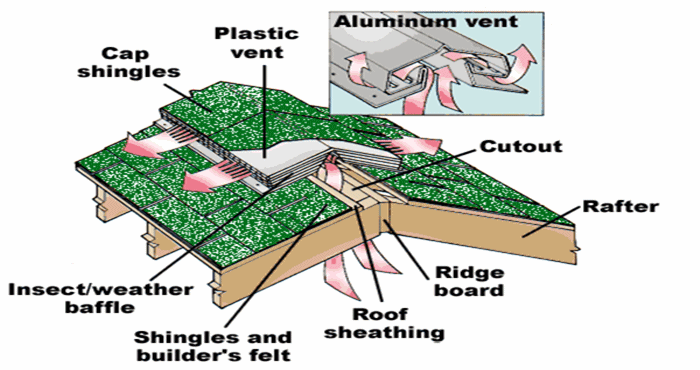Attic fans can also make a lot of noise.
Attic fan that forces air out of the ridge vent.
One static vent style is the turbine vent which uses wind to power its enclosed fan all it takes is a light breeze to rotate the blades and suck heat out of the attic view example on the home.
You ll see that they have these metal ridge vents that have a folded edge on one side of it.
Do not use mechanical means electric attic fans.
Attic ventilation fans whether hard wired or powered by their own solar panels seem like a low cost and effective way to help keep your house cool.
One of the leading causes for fires.
Choosing a ridge vent or an attic fan.
You ll be able to move air throughout the attic without the use of fans or turbines when enough space is given to this vent design.
List of the cons of roof ridge vents.
The downside of attic ventilation fans.
So it might be worth looking at the type of ridge vent that you have.
Unlike ridge vents attic fans use electricity and need regular maintenance to keep working properly.
An attic fan is an active system that actually forces air out.
Ridge vents do not always provide the proper ventilation in some homes.
More than 50 of the attic fans i see do not work and have current still live to the motor.
However the utility of attic ventilation fans is actually quite a controversial topic.
The effect of ridge vents for the roof depends upon the energy efficient nature of the structure.
Electric attic fans however often increase energy consumption and cancel out any savings unless the attic is not insulated at all.
Best ventilation is open soffit venting to a open vented ridge vent.
Fans are needed only when there isn.
Ridge vent must me installed per the manufactures instructions.
They don t let enough air out.
When you are deciding between a ridge vent or an attic fan consider the needs of the attic.
Since your solar vent fan only moves 500 cfm a third to half that of a typical hardwired attic vent fan it probably won t move enough air to reverse the action of the ridge vent.
Good insulation reduces fan effectiveness.
In a properly designed passive system air enters through the soffit vents rises by convection in the attic and exits through the vents in the roof or gables.

